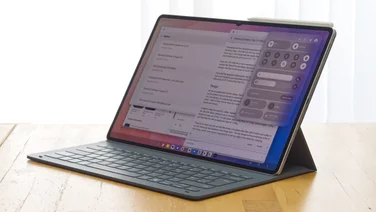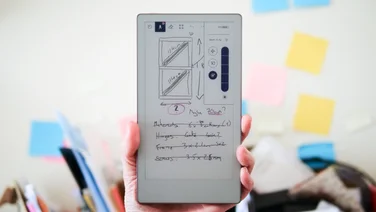To help us provide you with free impartial advice, we may earn a commission if you buy through links on our site. Learn more


It’s little surprise that Packard Bell’s Liberty Tab is almost identical to the Acer Iconia Tab A500, as Packard Bell is simply Acer’s “style” brand. Where the Iconia Tab has a brushed-metal finish to appeal to the techie crowd, the Liberty Tab has a glossy burgundy case with chrome edges, but otherwise the hardware is exactly the same: a dual-core 1GHz Cortex A9 processor with a low-power GeForce graphics chip and 1GB of RAM.
There are some significant differences, however. On the plus side, the Liberty Tab doesn’t come with Acer’s “hub” apps installed on the home screen, which are a waste of space. Instead, there’s a cleaner home screen, although you still have access to the same selection of apps, including an office document viewer, a choice of eBook and magazine readers, a decent replacement video player, an internet music player and a selection of games.

Our Liberty Tab was running Android 3.0, although an upgrade to Android 3.2 will be available by the time that you read this. Tablets should automatically update to the latest version of Android using an over-the-air update.
In use, we noticed more lag in the interface than we were expecting. Most Android devices have a touch of lag, but the Liberty Tab was more prone to hanging, especially when using the keyboard. This was with a task-killer app running, so the lag can’t be attributed to another app hogging memory – we expect it’s a result of a poorly optimised Android build. Hopefully the upgrade will fix that, but we can’t comment on this as we haven’t been able to test it.
Another bugbear is the screen. It’s brightly and evenly lit, and although its glossy finish attracts reflections, it has great viewing angles and punchy colours; however, the touch interface is over-sensitive, often registering a tap when you’re in fact trying to drag the screen, which can be incredibly frustrating.
Still, its 1,280×800 resolution is great for browsing the web and watching. The speakers have Dolby Mobile enhancement and sound great, with good spatial definition that works well when using headphones too, so it’s ideal for long journeys when you need to keep yourself – or your kids – entertained. With battery life of just over 10 hours, the Liberty Tab lasts a similar amount of time to the majority of 10in Android Tablets and plenty of time for a long film. Having said that, you may want to invest in a stand, as the Liberty Tab is one of the heaviest tablets at 760g.
Other features are common to both Acer and Packard Bell tablets, but worth pointing out nevertheless: there’s a Type A USB host port that lets you plug in memory sticks to expand storage (on top of the microSDHC memory card slot), and a mini-HDMI output means you can view your tablet’s contents on a large HDTV. There’s also a handy screen-lock switch that lets you keep the orientation of the interface fixed, which is handy when reading while lying down, for example.

Of course, it’s no surprise to find that the prices of the Iconia Tab and Liberty Tab are identical, although there’s only a 16GB or 32GB Wi-Fi-only Liberty Tab currently available, whereas the Iconia Tab can be bought in 16GB, 32GB or 32GB+3G flavours. We’d argue that the 16GB Wi-Fi version for £350 is the best value, making this the cheapest Android 3.0 tablet. That said, if you’ve got a bit more money to spend, the Asus Eee pad Transformer is a better product for only a little more, while the Samsung Galaxy Tab 10.1 is even better.






